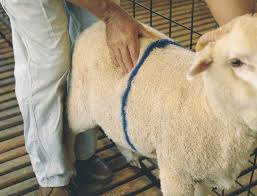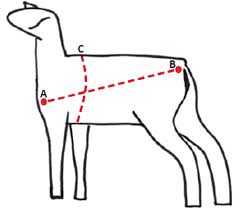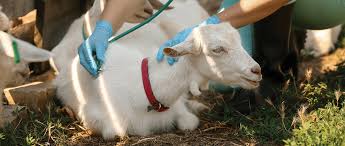The proper measurement of live body weight, which can be challenging in village settings due to the lack of weighing scales, is essential for achieving various goals related to both the medical and economic status of animals.
Knowing the live body weight of small and large ruminants is important for breeding, correct feeding, and health management (Slippers et al., 2000).
In addition to measuring the live weight of meat animals, researchers also consider other parameters such as body length, width of the pelvis, height at the withers, and chest girth to adequately evaluate live animals (Atta et al., 2004).
Under standard conditions, properly calibrated livestock scales are the most accurate and consistent method for determining body weight. However, under farm conditions where scales and records may be absent, it can be difficult to know the weight of sheep and goats (Abegaz and Awgichew, 2009).
Furthermore, some standard weighing scales are often too expensive for small-scale farmers (Mahieu, 2011), leading many to rely on estimates of body weights using measurable body characteristics (Alade et al., 2008).
Read Also: Reasons why Feeding your Fishes is very Important
Methods for Estimating the Weight of Small Ruminants

1. Weight Band Method: The weight band is wrapped directly behind the shoulder blade, down the fore-ribs, under the body behind the elbow, and around to the point behind the shoulder blade. The ends of the weight band are overlapped on top, along the goat’s spine. The resultant weight measurement is then read off the weight band in kilograms.
2. Visual Appraisal: Visual determination of the weight of animals can be prone to errors, such as using the same estimate for different breeds of a particular species (Otoikhian, 2008). Body structure may be deceptive when estimating weight (Slippers et al., 2000). For example, Red Sokoto goats appear lighter than their actual weight due to their light bones. Additionally, a white animal often appears larger than its actual size (Otoikhian, 2008).
3. Body Linear Measurements: There are several linear dimensions that can be used to quantify the size of an animal and estimate its weight. Commonly used body linear measurements include height at the withers, heart girth, chest depth, body length, fore cannon bone length, rump height, ear length, and tail length. Among these, heart girth and cannon bone length are least affected by the animal’s posture. Abegaz and Awgichew (2009) described the following linear measurements:
4. Height at Withers (HAW): This measures the distance from the platform on which the animal stands to the withers. The measurement is made using a measuring stick with two arms: one held vertical and the other sliding to record the height. The animal should stand squarely on all four legs, with the vertical arm of the measuring stick placed on the ground at a right angle to the platform. The shorter arm is then slid down to touch the shoulder at the desired point, and the height is measured.
5. Heart Girth (HG) or Chest Circumference: Heart girth is the circumferential measurement taken around the chest just behind the front legs and withers. This measurement is taken to the nearest 0.5 cm. HG is a highly repeatable measurement, though it may vary slightly with changes in posture or as the animal breathes.
6. Body Length (BDL): Body length refers to the distance from the base of the ear to the base of the tail. Care must be taken to ensure that the backbone is straight in both vertical and horizontal planes during measurement.
7. Hip Width (HW): Hip width is the distance between the outer edges of the major hip bones on the right and left sides. The hip bones are easily located, and the distance between them can be measured with a pair of large calipers.
8. Rump Height (RH): Rump height is the distance from the platform to the rump, measured using a stick as described for height at the withers.
9. Fore Cannon Bone Length (CB): This is the length of the lower part of the leg extending from the hock to the fetlock. Linear development of bones in the body is strongly related to the overall size of the animal.
10. Chest Depth (CD): Chest depth measures the distance from the backbone at the shoulder to the brisket between the front legs.
Read Also: Reasons why Fishes Refuse to Eat their Feed and How to Correct it
Precautions for Taking Body Linear Measurements

Movement and posture of the animal can introduce errors into measurements and estimated weights. To counteract these effects, the following precautions are recommended (Abegaz and Awgichew, 2009):
1. Whenever possible, choose measurements that are minimally affected by the animal’s posture.
2. Standardize the position of all animals being compared.
3. Be patient and wait for the animal to stand correctly before taking measurements.
Read Also: Analysis of Biodata Relating to Water Quality (H2O)






